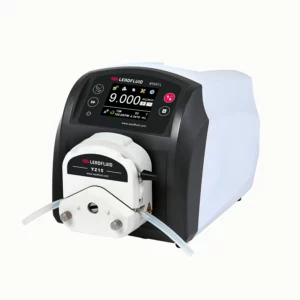The speed or rotation rate of a peristaltic pump directly affects fluid delivery by influencing the flow rate of the pumped fluid.
Here’s how the speed of a peristaltic pump affects fluid delivery:
- Flow Rate Control: The speed or rotation rate of the peristaltic pump determines how quickly the pump head rotates and compresses the tubing. As the pump head rotates faster, the tubing is compressed more frequently, resulting in a higher flow rate of the pumped fluid.
- Linear Relationship: In most peristaltic pump systems, there is a linear relationship between the pump speed and the flow rate of the pumped fluid. This means that increasing the pump speed results in a proportional increase in flow rate, and decreasing the pump speed leads to a corresponding decrease in flow rate.
- Flow Rate Range: Peristaltic pumps typically offer a wide range of flow rates that can be achieved by adjusting the pump speed. By varying the speed of the pump, users can precisely control the flow rate of the pumped fluid to meet specific application requirements.
- Flow Rate Accuracy: The accuracy of flow rate control may vary depending on the design and capabilities of the peristaltic pump system. peristaltic pump flow rate High-quality peristaltic pumps equipped with precise speed control mechanisms and feedback systems can achieve accurate and consistent flow rates across a wide range of operating conditions.
- Viscosity Effects: The viscosity of the pumped fluid can influence the relationship between pump speed and flow rate. Higher viscosity fluids may require higher pump speeds to achieve the desired flow rate due to increased resistance within the tubing.
- System Pressure: Changes in system pressure, such as variations in backpressure or fluid viscosity, can affect the relationship between pump speed and flow rate. Peristaltic pumps may require adjustments to pump speed to maintain the desired flow rate under changing operating conditions.
- Limitations: While increasing the pump speed can generally increase the flow rate, there may be practical limitations to how fast a peristaltic pump can operate. These limitations may be related to factors such as motor torque, tubing compression characteristics, and system stability.
Overall, the speed or rotation rate of a peristaltic pump is a critical parameter that directly influences fluid delivery by controlling the flow rate of the pumped fluid. By adjusting the pump speed, users can achieve precise and consistent flow rates to meet the requirements of various applications.
